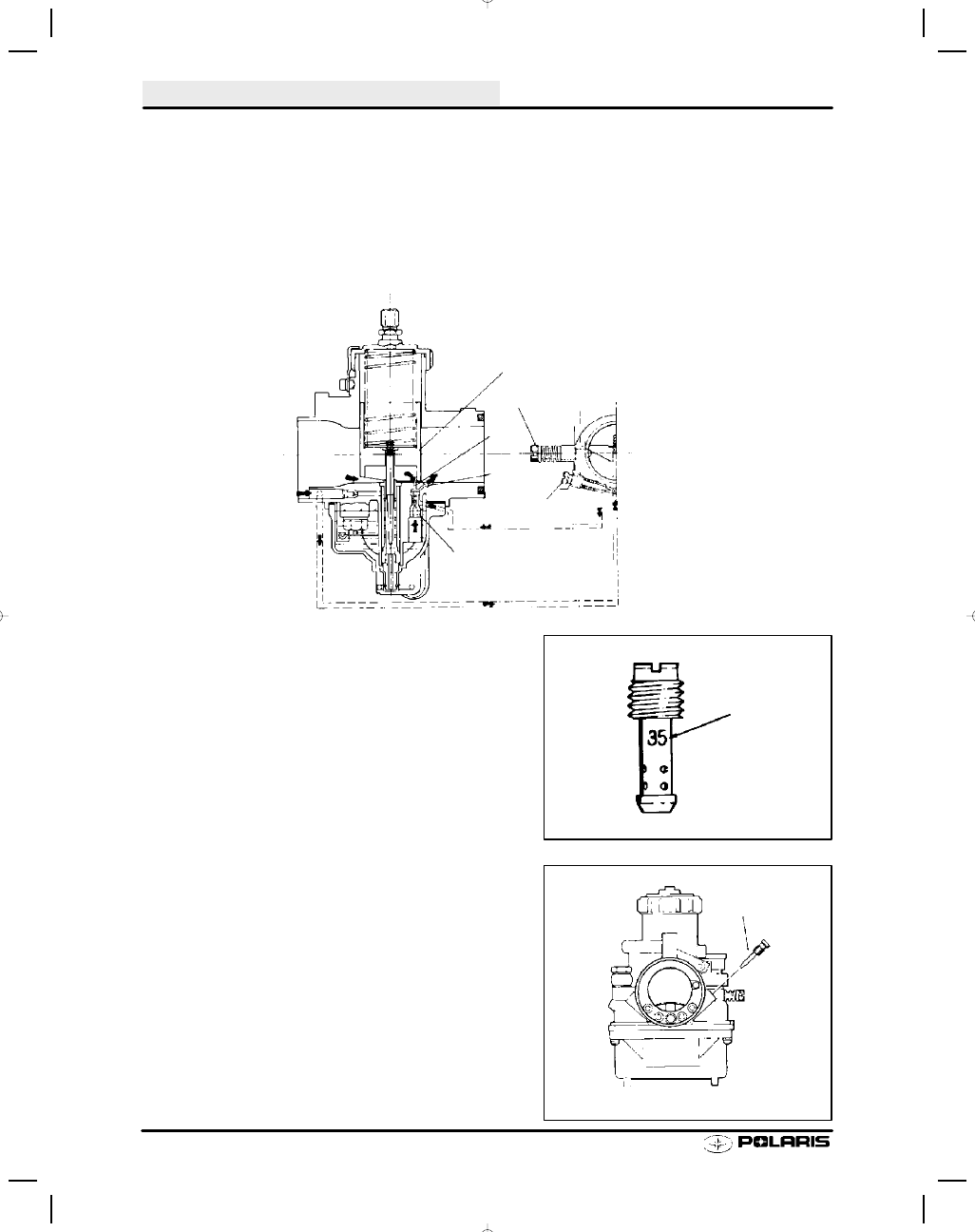Snowmobile Polaris PRO X (2003 year). Instruction - part 27

CARBURETION
3.10
Pilot System (0-3/8 Throttle)
The pilot system’s main function is to meter fuel at idle and low speed driving. Though its main function is to supply
fuel at low speed, it does feed fuel continuously throughout the entire operating range.
Fuel for the pilot jet is drawn from the float bowl, mixed with air regulated by the air screw, and delivered to the
engine through the pilot outlet.
The mixture is regulated to some degree by adjusting the air screw. When the air screw is closed, the fuel mixture
is made richer as the amount of air is reduced. When the air screw is opened, the mixture is made more lean
as the amount of air is increased.
Pilot Jet
From idling to low speeds, the fuel supply is metered by the
pilot jet. There are several air bleed openings in the sides
of the pilot jet which reduce the fuel to mist. The number
stamped on the jet is an indication of the amount of fuel in
cc’s which passes through the jet during a one minute inter-
val under a given set of conditions.
Pilot Air Screw
The pilot air screw controls the fuel mixture from idle to low
speeds. The tapered tip of the air screw projects into the air
passage leading to the pilot jet air bleeds. By turning the
screw in or out, the cross sectional area of the air passage
is varied, in turn varying the pilot jet air supply and changing
the mixture ratio.
Throttle Valve
Throttle Stop Screw
By-
pass
Pilot Outlet
Air Screw
Pilot Jet
Indicator
Number
Pilot Air Screw